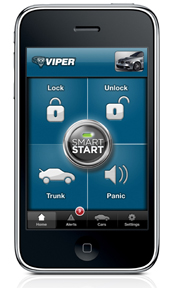
Security fobs now boast more features than the typical car fob. Smartphones and especially the iPhone with its thousands of home and vehicle applications are supplementing home controllers. The iPad may replace home systems touchpad controllers. Personal mobility is a hot ticket. Home entertainment, computer networking and communications systems — not to mention third party alarm monitoring — are moving quickly into the homeowner’s vehicle, pocket and purse.
There is, no doubt, a fusion of home, personal and car-based technologies, which can provide more diverse business opportunities for electronic system contractors.
“There is clearly a trend of more computer and communications, including Internet, in cars,” points out CEDIA Chief Executive Officer Utz Baldwin. “Just look at the technologies in vehicles today that are aimed at safety, convenience and performance, just like systems in the home.” Complementing Baldwin’s focused efforts on redefining the role and future of electronic system contractors as he conducts country-wide member roundtables part of ADI Expos, technology is impacting the industry and homeowners, too.
“Mobility of people is a given and so is their need for connections through in-car systems, wireless nets, smartphones, iPhones and iPads,” Baldwin adds. “Broadband service providers have a growing role to play in diverse home and portable systems and services. Everyone wants to be there” — at the gateway to the home and connect to the car or carrying around devices. “Technology already follows us around today,” Baldwin adds. People want that and see value in connecting many of these services back to from the home.
In today’s market, “we are seeing more homeowners interested in protecting their vehicles and high-valued assets. Most of them already have a security system installed and understand the benefits of investing in this additional technology to add another level of security to prevent theft and protect their property,” says Shawn Benevides, senior product marketing manager for intrusion products at ADI.
“ADI is always looking to provide dealers with new opportunities to expand their business. In addition to vehicle protection, ADI offers numerous add on technologies that interface with home security that dealers can offer to their existing customer bases, and with new security system installations,” comments Benevides. He adds that ADI offers solutions for asset monitoring and protection, outdoor perimeter protection, PERS, pool alarm systems, surge suppression and more. The emphasis is on diverse solutions to meet myriad needs.
In serving the profession, CEDIA’s Baldwin also believes the association will serve a much more diverse group as technologies and mobility grow.
Still, right now, there are emerging ways that vehicle systems can work together with home systems, including security. AutoContact by GAR Security Equipment is a universal wireless anti-theft device that works in conjunction with any manufacturer’s control panel and wireless receiver to protect and secure cars, motorcycles, boats, trailers, RVs, ATVs, golf carts, jet skis and tractors. The anti-theft device detects vehicle removal through real time monitoring of any home security system. The homeowner parks a wheel of his or her vehicle on the AutoContact and arms the system.
Another example: The Uplink u-Traq Auto GPS offers tracking devices for vehicles so users can know in real-time where a family member is located and how fast he or she is traveling.
There also is synergy in the evolution of the keyfob.
There are home alarm keyfobs with some with panic alarm and capability to control lights and other appliances. There are car keyfobs to lock and unlock car doors as well as a panic alarm and other vehicle-centric features. Often, never the twain will meet. Except now through smartphones and the Internet and the scores of applications that can, on the one hand, control vehicle needs while, on the other hand and through different apps, control home systems as well as display images if the homeowner has security video cameras or videocams.
In some solutions, distance from the car makes a different. For example, Bluetooth-enabled keyfobs connect to a vehicle from about a mile away. With other solutions, people can connect to their auto or their home from anywhere in the world if there is an online connection. While home systems firms often do not usually get involved in car security systems, opening up the various home systems to Internet access can provide those connections the homeowner may find valuable while outside the home or in his or her car.
Beyond the blending of car and home security, there seems to be no end to the possibilities of entertainment, communications and Internet access in vehicles. A growing number of vehicles, especially recreational vehicles, now have satellite television service, often through a monthly fee plus data stream cost.
Vehicles as a moveable home or office have attraction.
That’s because "consumers want a vehicle that's always on and always connected," Kieran O'Sullivan of Continental Automotive Systems contended at a recent CES show. In the near future, he said, "consumers and carmakers will be able to customize the [dashboard] instrument panel to their individual tastes the same way that people customize their mobile phones." And home systems professionals can take advantage of those advances.
Car makers already see potential of the vehicle-home connection. GM OnStar, with its original roots in security, now is hinting – thanks to its Google Android potential – to move beyond vehicles and beyond GM, too. Its business model is more like central station alarm monitoring with real people answering alarms and providing services. There is talk that GM may, one day, partner with a national alarm monitoring service. Ford Sync is voice-activated to hold down cost and grab market share as compared to the pricier OnStar app. Both Ford and GM have smartphone connect ability.
In other ways, in-car technology has or will soon have links to home systems such as a home DVR remote and by extending some Web-based home automation systems such as the mass market Schlage LiNK, which can control doors, lights and other home-based systems. In development are smartphone infrared accessories to replace the most powerful universal remotes. The connections between home and vehicle are growing leaps and bounds — diversifying opportunities.

